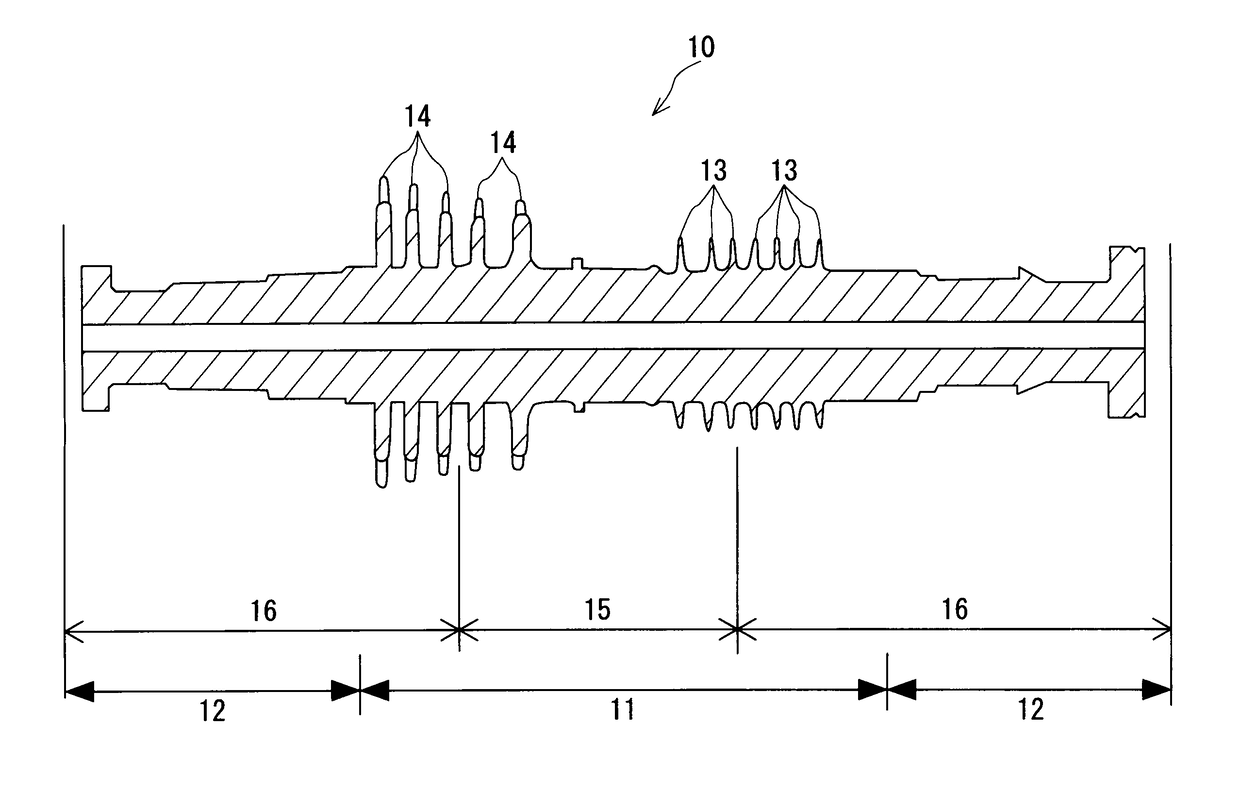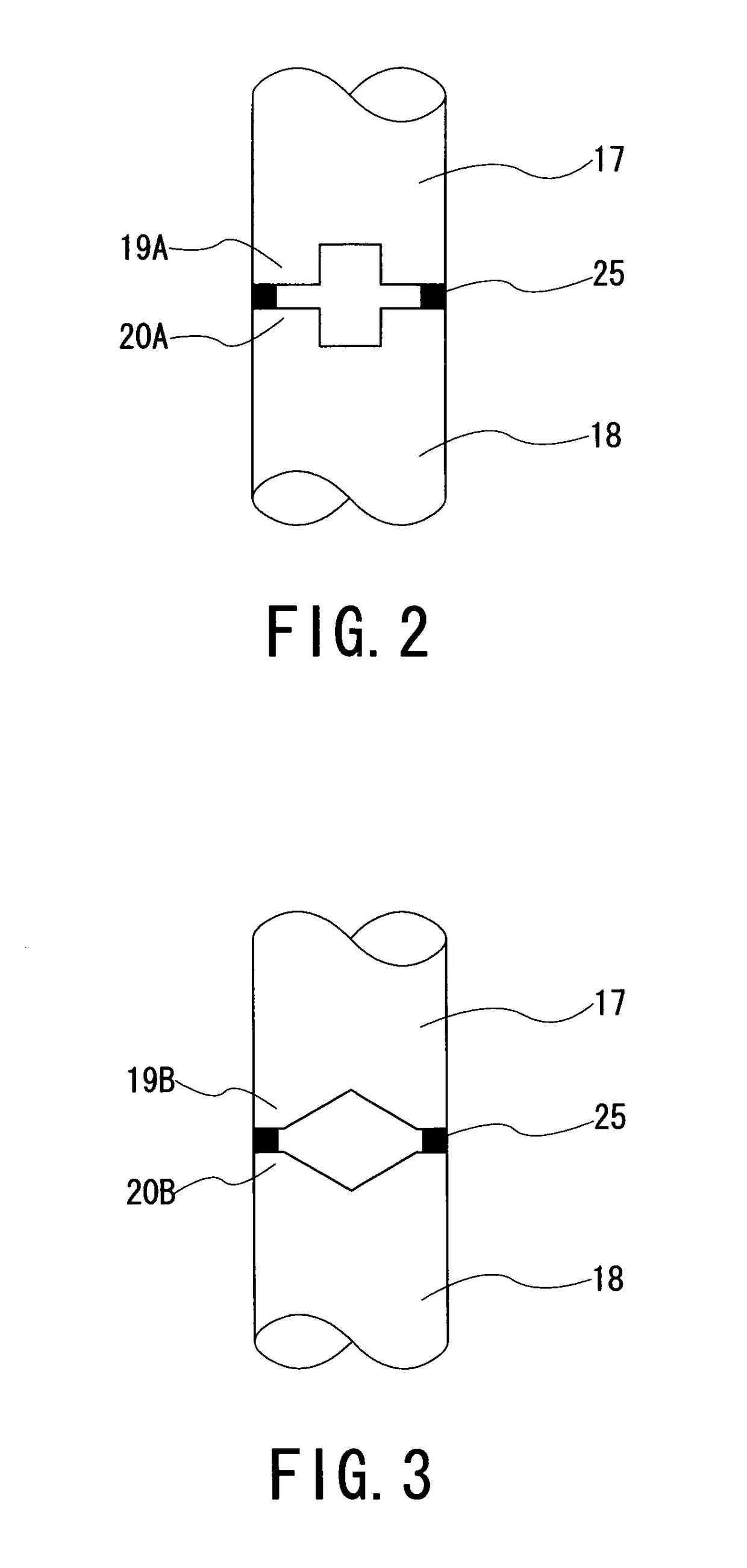Method of manufacturing steam turbine rotor and steam turbine rotor
a manufacturing method and steam turbine technology, applied in the direction of machines/engines, blade accessories, metal-working apparatus, etc., can solve the problems of high cost of heat-resistant alloys, insufficient high-temperature strength, and inability to meet the requirements of high-temperature strength, etc., to ensure the soundness of the steam turbine rotor 10 and the effect of excellent high-temperature strength
- Summary
- Abstract
- Description
- Claims
- Application Information
AI Technical Summary
Benefits of technology
Problems solved by technology
Method used
Image
Examples
second embodiment
(2) Second Embodiment
[0065]In the second embodiment, components similar to those in the first embodiment are denoted by the same reference numerals as the corresponding components, and description thereof will be simplified or omitted.
[0066]The present embodiment differs from the first embodiment in that: the ultra-high temperature side portion 15 and the high temperature side portion 16 of the steam turbine rotor 10 are made of the same heat resistant alloy, e.g., a Ni-based superalloy, and thus both the first electrode 17 and the second electrode 18 used for ESR manufacturing of the steam turbine rotor 10 have a chemical composition corresponding to the chemical composition of the Ni-based superalloy.
[0067]In this case, both the ultra-high temperature side portion 22 and the high temperature side portion 23 of the ESR ingot 21 produced by the ESR process by using the first electrode 17 and the second electrode 18 are made of the Ni-based superalloy, and thus, there is no compositi...
PUM
| Property | Measurement | Unit |
|---|---|---|
| steam temperature | aaaaa | aaaaa |
| temperature | aaaaa | aaaaa |
| temperature | aaaaa | aaaaa |
Abstract
Description
Claims
Application Information
 Login to View More
Login to View More - R&D
- Intellectual Property
- Life Sciences
- Materials
- Tech Scout
- Unparalleled Data Quality
- Higher Quality Content
- 60% Fewer Hallucinations
Browse by: Latest US Patents, China's latest patents, Technical Efficacy Thesaurus, Application Domain, Technology Topic, Popular Technical Reports.
© 2025 PatSnap. All rights reserved.Legal|Privacy policy|Modern Slavery Act Transparency Statement|Sitemap|About US| Contact US: help@patsnap.com



